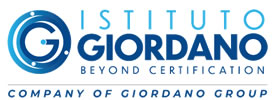
SECTION CONTACTS
Corrado Colagiacomo
Tel. 0541 322.355
E-mail c.colagiacomo@giordano.it
SMOKE AND HEAT EXHAUST VENTILATORS
The smoke and heat exhaust ventilators laboratory, is designated to fluid dynamic testsf with reference to smoke and heat evacuators according to UNI 9494 and EN 12101 regulations and it was born after DM of 20 December 2001.
From this document we understand the necessity of producers to possess, for every model assembled on site, the compliance declaration to the prototype undergone a test from an authorized laboratory , according to 7 december ’84 n. 818 Law and DM 26 March ’85.
Main activities
The laboratory is perfectly equipped for every kind of test that is expected in reference regulations:
- Air flow on big products like automatic mechanisms and sensors
- Tests of functionality of mechanisms, in environmental conditions that are exasperate and critical
- Mechanical resistance to load and atmospheric agents.
Main equipment
- A set composed of a calm chamber and a wind generator that is able to test the effective useful surface (SUA) with an automatic device with evacuator rotation;
- A chamber, called fire chamber, that simulate exasperating the temperature conditions of evacuator during the “flash-over” phase,
- A set of equipment that are able to test the mechanic characteristics of the evacuator at room temperature after thousands of opening and closing cycles,
- A climatic chamber that verifies the capacity of opening, without external helps, of an evacuator undergone very strong climates (-25 °C). A video camera, into the chamber, consents to record every moment of the test, thus helping to eliminate eventual failure causes. Every signal, every input from test stations is picked up into a system of digital acquisition into a control console; this console directs and supervises every machine that is into the laboratory. This acquisition and control system minimizes the human intervention and so it guarantees a minor uncertainty of results and a major independence.












 Do you need more information about our services?
Do you need more information about our services?